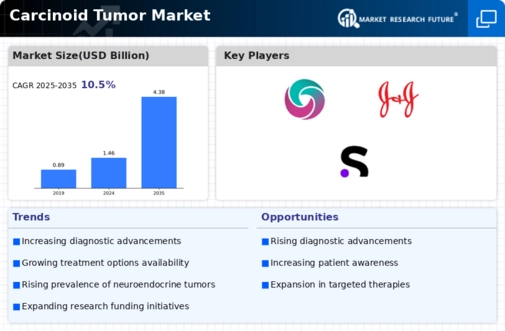Market Analysis
In-depth Analysis of Carcinoid Tumor Market Industry Landscape
Carcinoid Tumors' complex medical, diagnostic, and therapeutic variables impact their market dynamics, reflecting their neuroendocrine nature. Hormone-producing cells cause gastrointestinal and respiratory carcinoid tumors. Diagnostic advances, neuroendocrine tumor awareness, and research and therapy development drive the market.
Carcinoid Tumor market dynamics depend on diagnostic technology. Imaging tools including somatostatin receptor imaging and PET scans have greatly improved carcinoid tumor detection and characterisation. The market reacts to demand for better diagnostic technologies that enable early identification and full assessment of carcinoid tumors, which is crucial for treatment planning.
An aging population and growing knowledge of uncommon tumors affect the carcinoid tumor market. The market reacts to demographic changes by concentrating on unique treatment options for diverse patient populations.
Therapeutic treatments and research greatly impact Carcinoid Tumor market dynamics. Carcinoid tumors are being treated with surgical excision, somatostatin analogs, targeted treatments, and peptide receptor radionuclide therapy. Research seeks to improve therapy effectiveness and safety and investigate new therapies. Market competition shows pharmaceutical and healthcare providers' ongoing attempts to innovate and supply complete carcinoid tumor treatment options.
Oncologists, endocrinologists, and medical device makers compete in the Carcinoid Tumor market. Industry companies develop new treatments and enhance old ones through research and development. Healthcare practitioners, research institutes, and industry actors collaborate to study and improve carcinoid tumor therapy. Treatment effectiveness, safety, and the capacity to customize carcinoid tumor treatments determine the market's competitiveness.
Government policies and regulations also affect carcinoid tumor markets. Regional availability of novel technologies depends on medical treatment and device regulatory clearances. Government financing for research and development and cancer treatment efforts boosts the market. Advanced carcinoid tumor therapy is also affected by reimbursement and healthcare infrastructure.







Leave a Comment